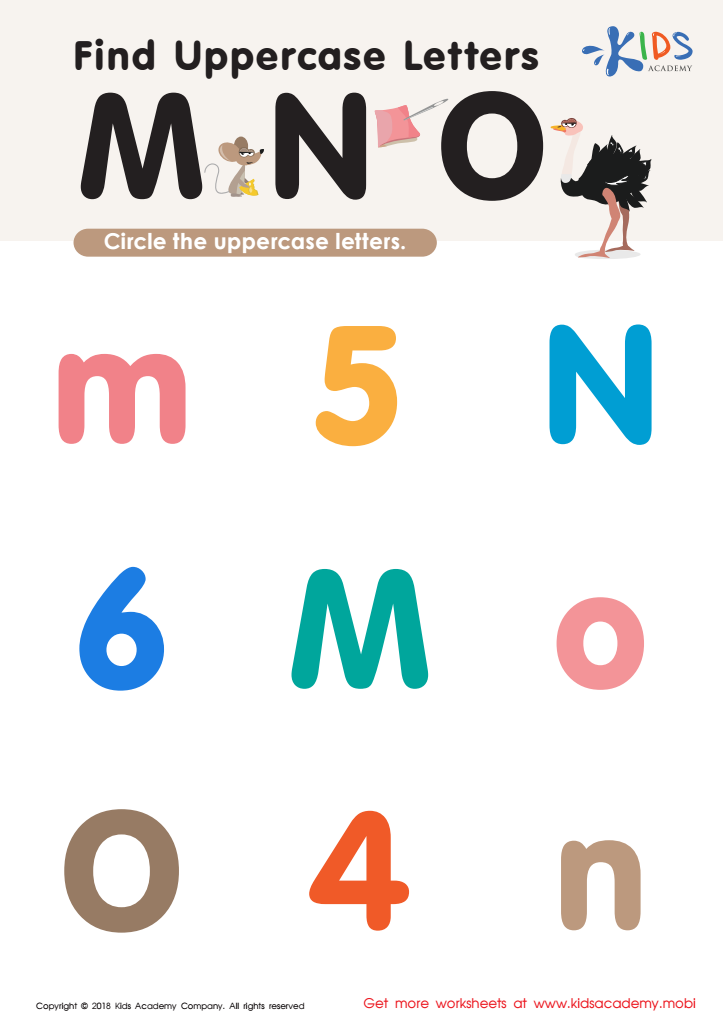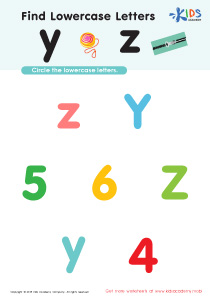Uppercase identification Normal Uppercase Letters Worksheets for 5-Year-Olds
5 filtered results
-
From - To
Introduce your 5-year-old to the joys of learning with our engaging Uppercase Identification Normal Uppercase Letters Worksheets! Specially designed for young learners, these worksheets make letter recognition simple and fun. Filled with vibrant illustrations and exciting activities, children will quickly master identifying uppercase letters. Teachers and parents will love how these printables promote strong foundational skills in early reading and writing, paving the way for academic success. Download our worksheets now and watch your child’s confidence and knowledge grow with each completed page! Perfect for preschool and kindergarten readiness.


Find Uppercase Letters Worksheet


Find Uppercase Letters J, K, and L Worksheet


Find Uppercase Letters A, B, and C Worksheet


Find Uppercase Letters V, W, X Worksheet


Find Uppercase Letters M, N, and O Worksheet
Parents and teachers should care about uppercase letter identification for 5-year-olds because it's a foundational skill in early literacy. Recognizing uppercase letters is a key step in learning to read and write, enabling children to understand the basics of how written language functions. These letters often appear in important places like the beginning of sentences or in proper nouns, helping young children to grasp structure in texts.
By the age of five, children are typically at a developmental stage where they can comprehend and remember the distinct shapes and sounds associated with letters. Early mastery of uppercase letters can boost their confidence in school—a critical factor for long-term academic success. Many educational activities, instructions, and even children's books incorporate uppercase letters, making this skill practically essential for any 5-year-old to effectively engage with educational material.
Moreover, being able to identify uppercase letters enhances fine motor skills that are important for writing. It supports other learning activities like name recognition, where uppercase letters frequently appear. Early identification also aids social development as children begin recognizing names of peers and places, facilitating smoother social interactions.
In summary, uppercase letter identification is a crucial developmental milestone that bolsters overall literacy, aids academic readiness, and supports social integration, making it a valuable focus for both parents and teachers.
 Assign to My Students
Assign to My Students
















